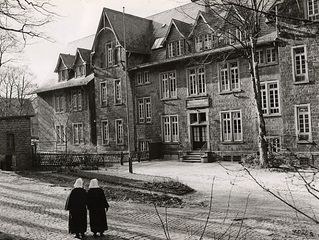Were there any transfers from Bethel?

After the end of "Aktion T4" in August 1941, numerous people were transferred back from private sanatoriums to state institutions. Bethel was also affected by these transfers in November and December 1941.
Transfers between Bethel and state sanatoria were already common practice in the 1920s and 1930s. The choice of treatment location was the responsibility of the respective funding organisation, which had the right of residence. The decision as to where inpatient treatment could take place therefore did not lie with the patients or their families. The reason for the transfers in 1941 was the vacant beds in the state sanatoriums, caused by the killings as part of "Aktion T4", which were now to be filled again. Almost every private institution was affected by the transfer requests from state institutions.
The transfers from Bethel to the provincial sanatoriums in Gütersloh and Lengerich also fell under these so-called "suction transfers". Although Bodelschwingh, the director of Bethel, had campaigned for the patients to remain in Bethel, the cost bearer decided on the transfer of almost 100 patients. According to the current state of historical research, it is known that 23 of the 46 people transferred to Gütersloh died by the end of the war. Of the 48 men and women who came to Lengerich, a total of 34 did not live to see the end of the war. Some died in the provincial sanatoriums, others were transferred to so-called killing centres such as Warta, Meseritz-Obrawalde and Gnesen from October 1943 during the second phase of "euthanasia".